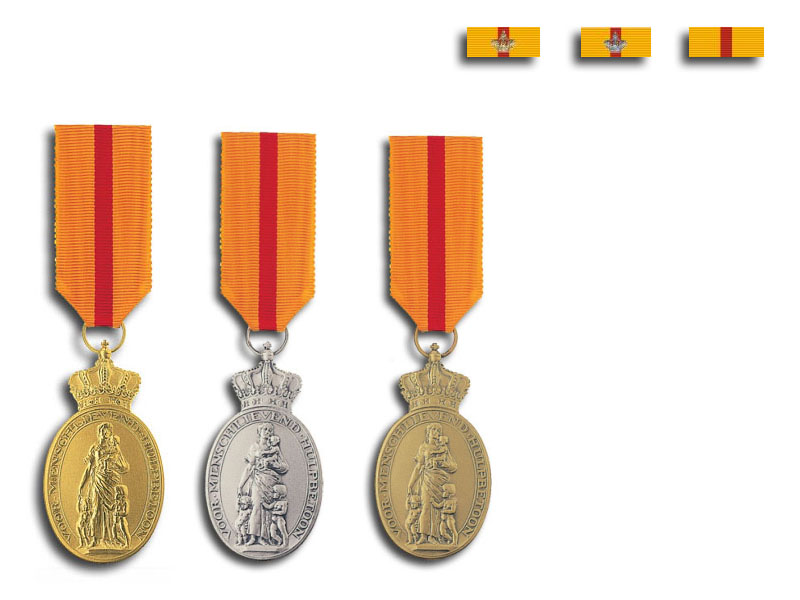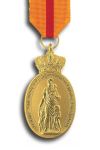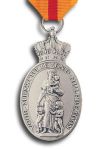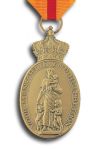Erepenning voor Menslievend Eerbetoon
The Medal of Honor for Humane Assistance (officially: Eerepenning voor Menschlievend Hulpbetoon) is a Dutch award intended for "those who have performed a humanitarian act that bears the characteristics of courage, policy and self-sacrifice".
The Medal of Honor for humanitarian assistance was instituted by King William I on 19 June 1822 per Royal Decree No. 92 because the king wanted to honor the rescuers of a soldier who had ended up in a well. The king did not consider the awards at the time appropriate because the rescue did not take place in a combat situation. In the early years, it was mainly sailors and members of rescue companies that received assistance for rescues at sea.
In 1912, the medal of honor was attached to an orange ribbon with a thin red stripe in the middle so that this award could also be worn. The medal of honor is six centimeters high. The medal of honor can be awarded in gold, silver and bronze.
On September 14, 2023, Prime Minister Mark Rutte posthumously presented the gold award to the children of Jan Zwartendijk. As deputy consul in Lithuania, Zwartendijk granted 2,345 visas to Polish Jews. These visas allowed these Jews to flee via the Soviet Union to Japan and from there to other countries. It is estimated that between 6,000 and 10,000 lives have been saved this way.

Subonderscheidingen

In the database: 3
Issued:unknown

In the database: 5
Issued:unknown

In the database: 25
Issued:unknown
Sources
- Photo: Kanselarij der Nederlandse Orden
- - The Dutch Medals Page
- Koninklijk besluit no. 92, 19 juni 1822

